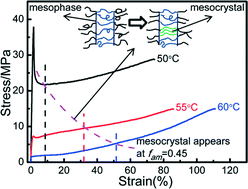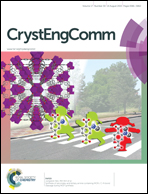Deformation and structure evolution of glassy poly(lactic acid) below the glass transition temperature
Abstract
Poly(lactic acid) (PLA) is a bio-based and compostable thermoplastic polyester that has rapidly evolved into a competitive commodity material over the last decade. One key bottleneck in expanding the field of application of PLA is the control of its structure and properties. Therefore, in situ investigations under cooling are necessary for understanding the relationship between them. The most intriguing feature of a supercooled liquid is its dramatic rise in viscosity as it is cooled toward the glass transition temperature (Tg) though accompanied by very little change in the structural features observable by typical X-ray experiments. The deformation behaviors and structure evolution of glassy PLA during uniaxially stretching below Tg were investigated in situ by synchrotron small-angle X-ray scattering (SAXS) and wide-angle X-ray scattering (WAXS) techniques. The stretched samples were measured by differential scanning calorimetry (DSC). The obtained results showed that the deformation and yield stress of glassy PLA are strongly dependent on the stretching temperatures together with the transition from mesophase to mesocrystal and the formation of cavities. With the increase in drawing temperature, the onset of the mesocrystal formation is delayed to a higher strain value, whereas corresponding to the same critical orientation degree of amorphous chains (fam ≈ 0.45). The DSC results indicated that the post-Tg endothermic peak corresponding to the melting of mesocrystal appears and shifts to a higher temperature with increasing stretching temperature, followed by the down-shifts (to a lower temperature) of the exothermic peak of cold crystallization of PLA. The appearance of a small exothermic peak just before the melting peak related to the transition of the α′ to α crystal implies the formation of an α′ crystal during cold crystallization in the drawn PLA samples. The structure evolution of glassy PLA stretched below Tg was discussed in details.


 Please wait while we load your content...
Please wait while we load your content...